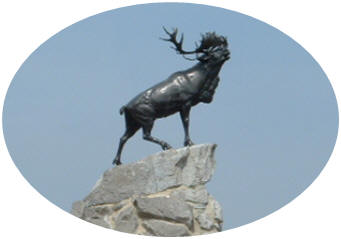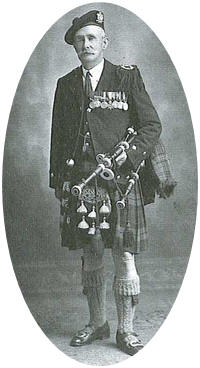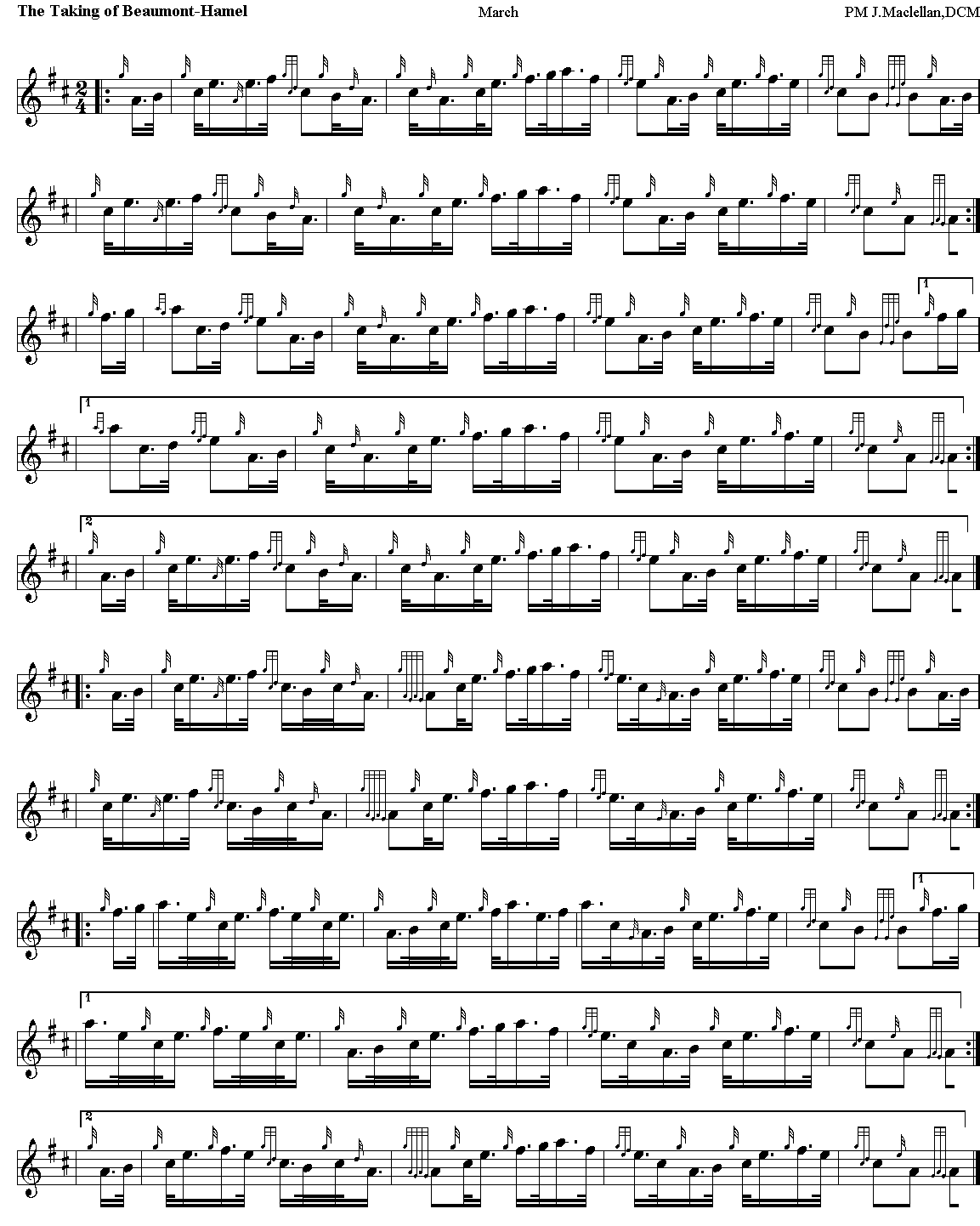 |
||

Best viewed in
|
Beaumont-Hamel
is a commune of the Somme département, in northern In November of
1916 His Majesty King George V granted the title "Royal" to the
Newfoundland Regiment. No other regiment in the The Beaumont-Hamel Newfoundland Memorial (shown above) is a memorial site dedicated to the commemoration of Dominion of Newfoundland forces members who were killed during World War I. The tune was composed by John McLellan during World War I.
Known to pipers as “John McLellan, Dunoon” but to
friends and family as “Jock,” John McLellan was a quiet and shy man
who composed some of the most enduring melodies in pipe music.
Among his greatest
contributions are the retreat marches Lochanside, The Highland
Brigade at Magersfontein, Heroes of Vittoria, The Bloody Fields of
Flanders and The Dream Valley of Glendaruel, the
competition marches The Taking of Beaumont Hamel, The Cowal
Gathering, South Hall and Glen Caladh Castle, the slow
air Mary Darroch, and the 2/4 slow march The Road to
the Isles. The latter tune, composed around 1891, began life as
“The Bens of Jura,” soon became “The 71st’s Farewell to Dover,” then
“The Highland Brigade’s March to Heilbron” and later “The Burning
Sands of Egypt.” What probably began as a rousing 2/4 march was
gradually transformed into today’s popular song and slow march.
He was born in Dunoon on
August 8, 1875 of an Islay father and Jura mother, Neil McLellan and
Mary Darroch McLellan. He had two brothers and three sisters. His
father died of pneumonia when John was just 8, leaving his
41-year-old washerwoman mother to raise the family, the youngest of
which was just a year old.
Little is known about his early piping life, or even who taught him. This was perhaps partly because he was known to be modest to a fault and would very rarely talk about himself. Very few photos of him have come to light.
He enlisted in 1892 at age 17 with the Highland
Light Infantry and went with the 1st Battalion to Malta in 1897. It
was at this point that he began naming his compositions for places
where he served or people he served with. He saw action in the Boer
War in South Africa, where he was awarded the Distinguished Conduct
Medal for gallantry in the field.
He left military life
soon thereafter and in 1903 joined the Govan Police Pipe Band in
Glasgow before returning to Dunoon around 1905. Some of his
compositions can be found in the old Peter Henderson publications as
written by “J. McLellan, Govan Police.”
However, most of his tunes were first published in the Cowal Collection books. Because he never published his own collection his status as one of the greatest and most prolific and pipe music composers is perhaps not as clear as it is with G. S. McLennan and Donald MacLeod.
During the Great War he
was a piper in the 8th Argyllshire Battalion Argyll and Sutherland
Highlanders – Willie Lawrie’s regiment – and served with the 51st
Highland Division on the Western front. He and Lawrie served in the
same band during the war.
He became pipe-major of the 8th Argylls in 1919 held that position until he retired in 1930.
During the 1930s, he
compiled and published a book of tunes composed by members of his
regiment –The 8th Battalion of the Argyll and Sutherland
Highlanders Collection. He contributed 40 of the 65 tunes in
the collection, and this remains the largest single collection of
his work published while he was alive.
In later life he was
active in piping around Dunoon, teaching the Dunoon Grammar School
Cadet Pipe Band and helping the local Boys’ Brigade band.
Besides being a piper, he played the fiddle and
was said to be an excellent whistle player. He was a middling
painter and poet, and one of the few composers who often wrote
lyrics to his tunes. In some cases he wrote the lyrics first. He was
known to write light verse at the front, 100 yards from the German
lines, and his poetry was often published in newspapers in the west
of Scotland.
He died at 73 on July
31, 1949 at Dunoon Cottage Hospital of colon cancer and was buried
with full military honors in Dunoon Cemetery. A plaque was erected
in his honor in the Castle Gardens in Dunoon near the pier in 1972.
His occupation at the time of his death was given as
"painter-retired." His was listed as single, and had no children.
|
|


